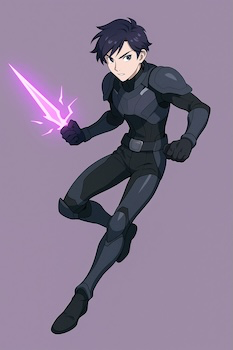Neuro-Lancer

Caster/DPS (Glass Cannon — high offense, low defense)
Core Concept
Neuro-Lancers are elite psionic operatives, specializing in harnessing raw neural energy and focused psychic force as weapons. Theirs is the path of the mind sharpened to a killing edge: pure offense, precision, and psychic disruption. Neuro-Lancers can devastate enemies at range or with area attacks, but rely on speed, anticipation, and overwhelming power to survive—they are fragile, but deadly.
Design Pillars
- High Damage Output: Specialize in direct-damage psionic attacks (single-target and AoE).
- Burst & Control: Can disrupt, stun, or panic enemies with psychic force.
- Fragility: Low defense and HP—relies on mobility, cunning, and striking first.
- Sci-fi Aesthetic: Visuals and mechanics evoke neural spikes, energy lances, and cortex-overload effects.
Signature Abilities/Spells
- Mind Lance: Pierces a target’s psyche for devastating psychic damage.
- Neural Overload: Blasts all nearby foes with a surge of pain and confusion (AoE).
- Psycho Crush: Telekinetically pummels a single target with raw neural force.
- Waking Nightmare: Induces terror and mental collapse in an enemy.
- Darkness: Blankets a zone in psychic chaos, causing foes to attack blindly (AoE).
- Phantom Step: Allows short-range “blinks” or phasing to escape or reposition.
- Distort Perception: Temporary stealth or evasion by clouding minds.
Role in Party
- Primary Offense: Deals the highest burst and sustained damage among psionic classes.
- Disruption: Excels at breaking enemy formations and disabling key threats.
- Tactical Mobility: Can escape danger or “kite” enemies, but vulnerable if caught.
Weaknesses
- Extremely low defense and HP; a true glass cannon.
- Limited self-sustain—relies on positioning, timing, or team protection.
- Needs support from defensive allies (like Espers or Priests) to thrive in prolonged fights.
Design Notes/Balance Hooks
- High risk/high reward: “Strike first, strike hard, vanish.”
- Reward players who can read the battlefield, manage threat, and maximize burst windows.
- May have “Overcharge” mechanics—risk self-harm for increased output.